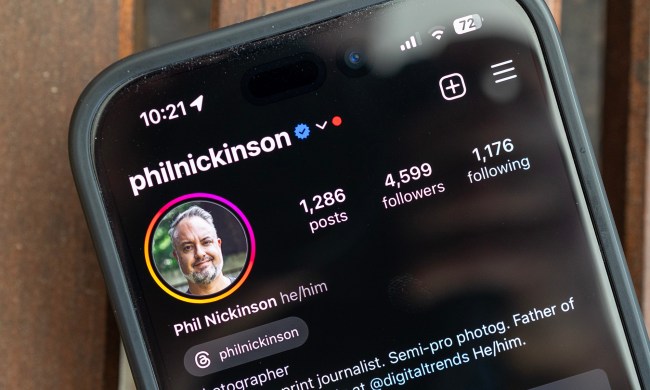
Irrelevancy, thy name is News Feed – at least, that’s the road we’re quickly traveling down. This is in part because of Facebook’s algorithm and in part because the site’s massive user base means the flood of stories has to be managed. Sure, it’s fun to reminisce about the good old days, when you’d see each and every post from your friends hitting the site. But those days are long gone (and you’re partially to blame if you have upwards of a few hundred friends and refuse to use Friend List filters).
Of course, the fact that marketers are keenly aware of Facebook’s power has something to do with all the post ranking business as well. Regardless of our perspective, though – user or advertiser – we all want to know why we’re seeing the things we see when we see them … and what we’re not seeing. And why. Why, why, why!
Well Facebook is acknowledging our thirst for knowledge, and will start a series of blog posts explaining News Feed algorithm adjustments. “Every time someone visits News Feed there are on average 1,500 potential stories from friends, people they follow, and Pages for them to see, and most people don’t have enough time to see them all,” Facebook says.
Cutting through the developer and marketing-speak, here are the important pieces Facebook explained, and how they are, and will with the new changes, impact your News Feed. Let the sifting begin.
1. “Last Actor”
A Last Actor is the last person you interacted with on Facebook; this could be someone’s wall you wrote on, someone whose post you liked, someone who you responded to in a comment thread, someone you tagged. And a new rule about the Last Actor will alter the News Feed.
The Last Actor now affects Affinity, which is Facebook’s measurement of how much you like someone or something. Affinity is the strongest factor in determining what shows up on your News Feed and when, so this is a big deal. The last person you interacted with gets a small Affinity boost now. Facebook says it’s been testing this and the results have been positive.
The good: You’re interacting with these people for a reason; if you talk to someone a lot, you will want to know more about them. If you comment or like things your friends post often, but you ignore Pages you follow (maybe you’re one of those types who get guilted in liking everything), you will get to see more of your friends’ posts and less of these Pages.
The bad: If you’re going on hate-liking sprees (i.e., sarcastically liking everything your social media nemesis does … which, maturity guys, c’mon), then you’re shooting yourself in the foot. Also, if all of your comments are to yell at someone for posting political updates you disagree with, get ready to see a lot more of what they’re up to! It also means you’re seeing a lot of the same, potentially, and new things and people won’t get introduced as easily.
2. “Time decay”
You know how sometimes you log into Facebook and sitting front and center in your News Feed is a three day old post, and the only reason you can surmise it’s there is because someone commented on it an hour ago? It is the absolute worst.
Have any of these things ever happened to you?:
-
A photo from someone’s wedding 10 days ago shows up. Two of your friends liked it an hour ago though, so it rose to the top.
-
A status update about the season finale of a show that aired two nights ago pops into your News Feed. Someone posted a comment on the end of the thread 45 minutes ago, so the information is back.
-
A link to a story about a trial the nation was watching and it wondered what the verdict will be shows up … even though you already know, because it happened yesterday. Someone just commented on this link, so it, too, is back.

There are a myriad of examples, and Facebook says it’s going to continue to find a better solution.
But it’s happening because this so-called Time Decay is less important than it used to be. Time Decay is a function that keeps content older than three hours from showing up in the News Feed. It’s an attempt to keep things fresh – however, it means that you potentially miss a lot of stories. But the update is going to reign in Time Decay a little, giving stories with lots of interactivity, regardless of their timing, a boost – this is where we get to Story Bumping (more on this in a second).
The good: Users are constantly complaining we miss out on News Feed stories; we want to see as much of what’s happening as possible. This is perhaps the best way to do that, unless Facebook were to adopt a real-time Twitter-like stream (which it won’t – unless you count the Ticker, a feature users never gravitated to).
The bad: See the three examples above. Irrelevant stories will continue to pop up; sometimes you’ll be happy to see a post you’d have otherwise missed and sometimes you’ll wish you could please god please never see anything about the season finale of American Idol that aired three days ago ever ago.
3. “Story bumping”
There was a lot of talk about Story Bumping recently when Facebook was accused of purposefully hiding the number of people that saw each of our posts. Today Facebook explained a little more about what this is, how it works, and how it’s affected what shows up in your News Feed and why. The best up-to-date explanation of story bumping comes from EdgeRank Checker:
“Story Bumping is the new Organic Ranking factor. Each visit to Facebook, Facebook looks at all of the new content and creates corresponding scores … Time Decay typically keeps content that is older than three hours from displaying in your News Feed. With Story Bumping, objects with high enough rank … can be bumped into your feed if you [missed it.]”
“Now organic [non-promotional] stories that people did not scroll down far enough to see can reappear near the to of News Feed if the stories are still getting lots of likes and comments.”
Facebook says early testing shows improvements. “In a recent test with a small group of users, this change resulted in a five percent increase in the number of likes, comments, and shares on the organic stories people saw from friends and an eight percent increase in likes, comments, and shares on the organic stories they saw from Pages.

Facebook says that before this change, a lot of content was going unread because users just didn’t want to keep infinitely scrolling to discover more stories – people were reading, on average, 57 percent of the stories in their News Feeds. With this change, we’ll be getting more like 70 percent.
The good: Well apparently, we’re OK with it, according to Facebook’s early data. Also, maybe Facebook will be able to further refine this so that instances described above (timely, news events) won’t constantly resurface.
The bad: Time Decay’s negatives apply here as well, since the two are so closely tied together. Basically, if you aren’t using Friend List filters now to parse your News Feed, you should start. Although be aware that other people commenting on posts from your friends’ updates will boost them to the top too, so you can’t cut idiots out of your News Feed entirely, no matter how hard you try. It also means the the most popular stuff rises to the top; it’s something people constantly complain about with the News Feed. You see recirculated ideas and new thoughts aren’t easily introduced into your social sphere.


